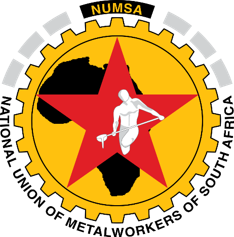While participants in the Comrades Marathon flocked the streets of Durban and filled the city’s houses on the eve of the big race, Kally Forrest was busy launching her new book Metal That Will Not Bend (from the Numsa slogan ”Insimbi Ayigobi”).
The launch took place at KwaMuhle Museum.
The Red Numsa Exhibition at the museum brings back sad memories of the past, as it reflects what took place at the height of apartheid – it depicts the poverty, disgrace, harassment and struggle of black people, which was their normal way of life.
Kally briefed the audience on the background to her book: what the union had achieved in the struggle against apartheid; the hard work of the trade unions in unifying to form one powerful union, Numsa; the determination of workers to change their working lives; the organisational and bargaining achievements of the union and
what it had done to change the conditions of metalworkers for the better.
Accumulation of power
“Metal that does not bend traces Numsa’s accumulation of power, from a few small unions in a handful of factories to the staging of national strikes involving thousands of workers in auto and engineering.
It examines how the union used its influence in macroeconomic and political arenas. Numsa was Cosatu’s most radical socialist affiliate, and the book explores its attempts to implement its vision,” Kally said.
The guests gave inputs on their experiences.
One could see that Brian Fredericks, former IMF assistant general secretary and an ex-employee of Toyota in Durban, still cares about Numsa passionately. “Apart from launching the book, Numsa needs to make an effort to bring back those people who are still alive, like me, to have a discussion not just about the formation of Numsa, but to discuss where Numsa is going,” he said.
“We may not be members and may not have voting rights, but some of our experience can make a contribution in ongoing debates in Numsa, not only about the historic part.”
Guests
June-Rose Nala, a former Mawu comrade, is a good example that shows that women can achieve top leadership positions of regional and general secretary, as she was in her time. Her emphasis was on unity: “Unity of purpose brought us together.” She focused on the practical side of building worker control and on how different unions came together to create Numsa.
The other guest was Magrapes Hlatshwayo, former regional secretary of Mawu, a humorous small man with big words and achievements. He focused on the changes in Numsa during and after apartheid.
Combat the violence
Willies Mchunu, ex-Mawu regional educator, focused on the Natal civil war and how Numsa had tried to combat the violence.
In her book, Kally says: “Bringing workers together in large industrial unions meant uniting people who were racially, ethnically and regionally divided across urban and rural areas and bantustans.
Organisation nationally would restrict employers’ ability to exploit racial and regional differences in wages and working conditions. In view of the country’s highly monopolised economy which brought many workers under the same ownership and linked them through interconnected production, this strategy made further sense.”
The launch was a huge success.
Source
Numsa News
